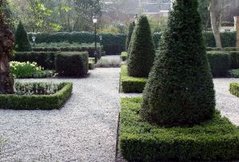
Water gardens are one of the most attractive kinds of gardens. Aside from the plants around it, the fishes swimming around a water garden’s pond makes it lively and unique.
Water garden landscaping is more complex than landscaping a normal garden. There are a lot of things that should be considered since it involves a lot of excavation and water treatment.
Since water garden landscaping presents special problems, it is important to plan the place out. First, the design and landscape of the garden should be drawn on paper. Furthermore, the design should include the dimensions of the garden, how deep the pond is and the layout of the entire area.
After the design is finalized, a flexible item such as a rope or a garden hose is used to establish the pond’s form. After marking the layout with spray paint, the excavation of the pond may begin. This is a tedious and exacting job so people may want to hire professionals or excavators to do the job.
When all of the soil is taken out, it is time for the second part of water garden landscaping, which is to install the plumbing. This is necessary to make decorative waterfalls or fountains work. When the plumbing is finished, the soil at the bottom and around the excavation should be covered up with a sort of liner to contain the water. Most liners are made out of waterproof cement.
At this stage, it is also important to make the pond’s lip extra sturdy by leveling that area out and filling it with cement. This perimeter is called a coping shelf and it provides support for the garden’s other features.
When the coping shelf is dry and covered with garden soil, boulders that serve as decorations for the pond’s perimeter should be installed. Lay them out according to the plan, installing the larger ones first. The boulders can also be used to conceal hoses, plumbing, tanks, wires and other functioning equipment. Nothing can spoil the natural beauty of a water garden than visible pipes sticking out of the landscape.
The next stage of water garden landscaping is planting the vegetation itself. For this purpose, low maintenance plants are usually favored. With the vegetation planted in the soil, mulch should be added to make the plants fertile.
While the perimeter is bristling with plants and rocks, the pond should not be left out. Rocks and aquatic plants should be carefully arranged at the bottom of the pond. When this is done, it is time to fill up the pond with water.
Adding the fishes is the final stage of water garden landscaping. Carps and goldfishes are popular choices because they are very colorful.
Water gardens add a lot of life to a place. Although it is complex and expensive, the spectacular beauty is well worth the cost.



No comments:
Post a Comment